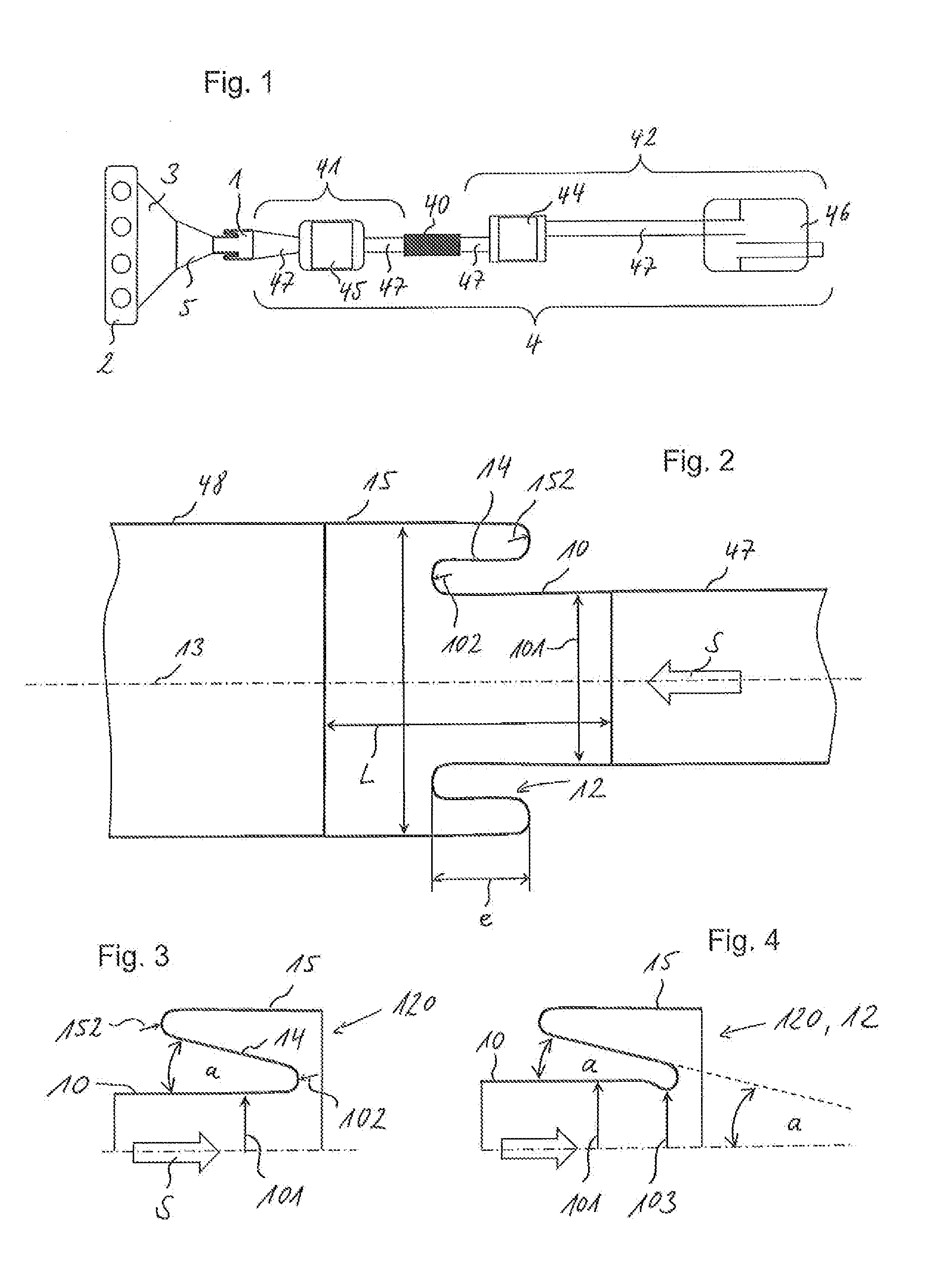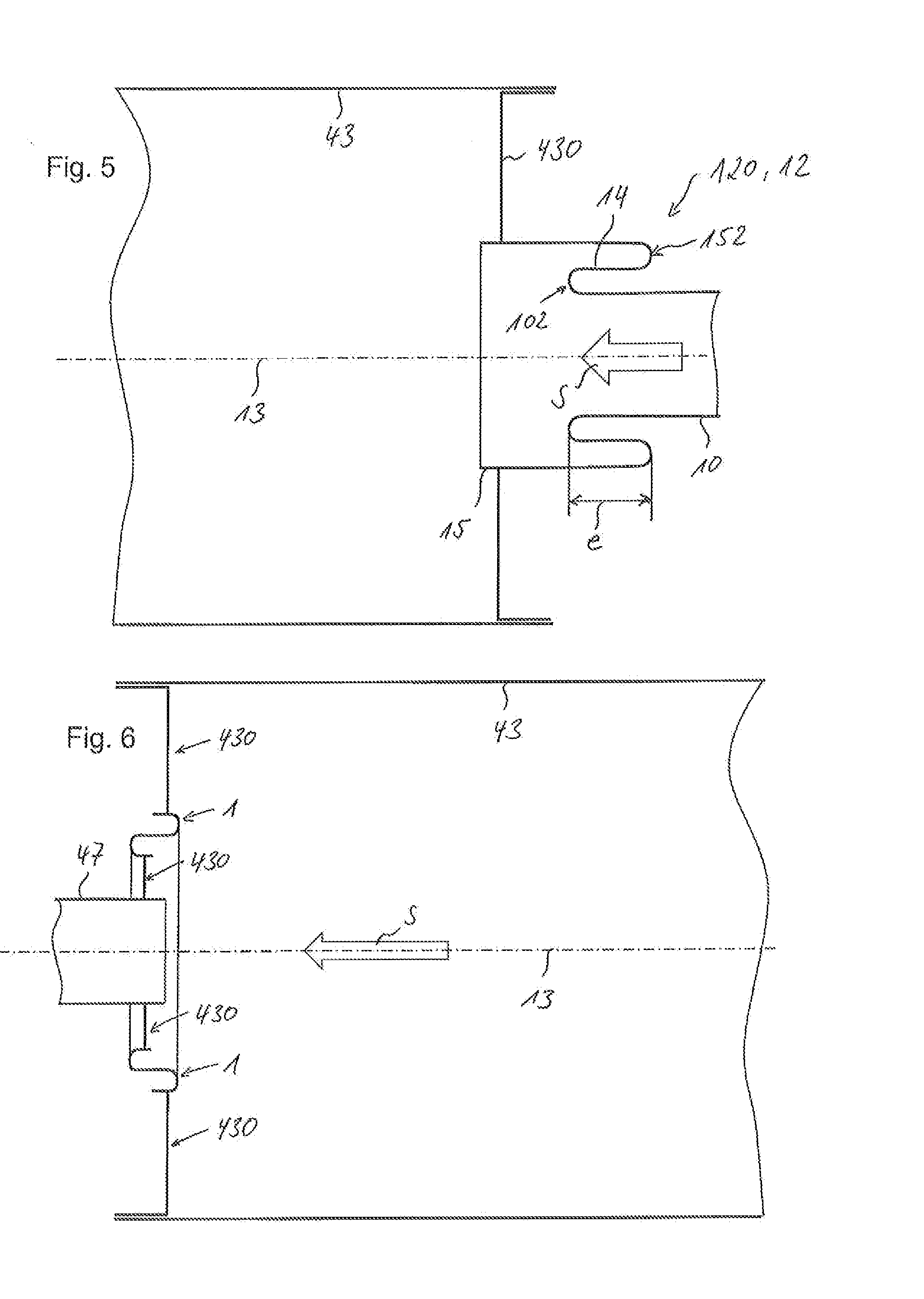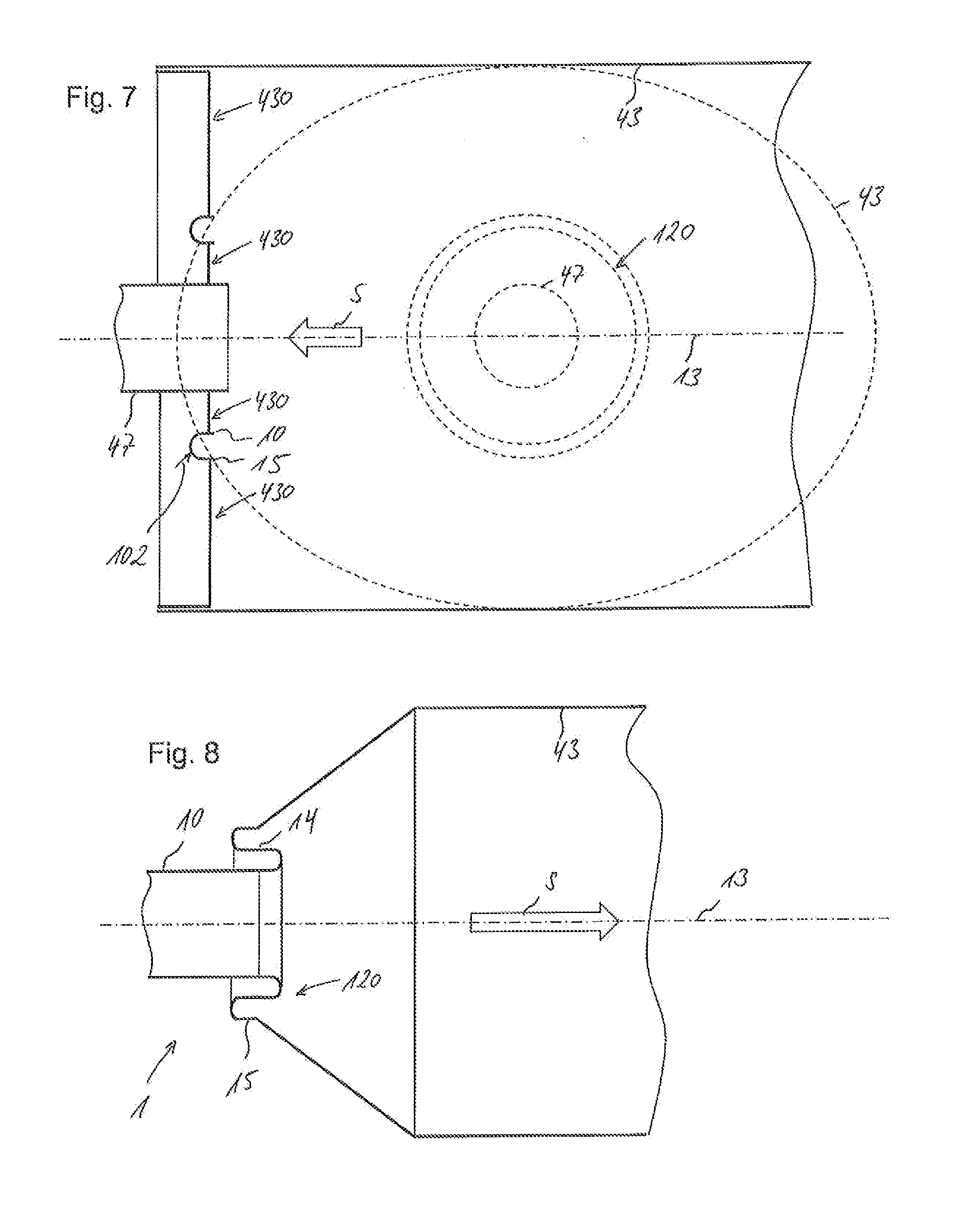Tubular acoustic insulating element
a technology of acoustic insulation element and tube, which is applied in the direction of exhaust treatment, machines/engines, jet propulsion plants, etc., can solve the problems of increasing and increasing the number of audible vibrations, so as to facilitate the integration of the insulating element and increase the rigidity of the element
- Summary
- Abstract
- Description
- Claims
- Application Information
AI Technical Summary
Benefits of technology
Problems solved by technology
Method used
Image
Examples
Embodiment Construction
[0032]FIG. 1 shows an exhaust gas system 4 consisting of a first section 41 and a second section 42. The first section 41 is formed by a converter 45 and exhaust gas pipes 47 connected on both sides of converter 45. The second section 42 consists of a particulate filter 44 and a muffler 46, with the particulate filter 44 and the muffler 46 being interconnected via an exhaust gas pipe 47. Upstream of the particulate filter 44 there is also provided an exhaust gas pipe 47 to which a mechanical de-coupling element 40 is connected which interconnects the two sections 41, 42. The purpose of the mechanical de-coupling element 40 is essentially to guarantee a certain freedom of movement of the exhaust gas system 4 over its entire length.
[0033]The entire exhaust gas system 4 is connected via a sound-absorbing insulating element 1 to an outlet opening of a turbocharger 5 which connects the exhaust gas system 4 via the manifolds 3 with the internal combustion engine 2. The vibrations which ar...
PUM
 Login to View More
Login to View More Abstract
Description
Claims
Application Information
 Login to View More
Login to View More - R&D
- Intellectual Property
- Life Sciences
- Materials
- Tech Scout
- Unparalleled Data Quality
- Higher Quality Content
- 60% Fewer Hallucinations
Browse by: Latest US Patents, China's latest patents, Technical Efficacy Thesaurus, Application Domain, Technology Topic, Popular Technical Reports.
© 2025 PatSnap. All rights reserved.Legal|Privacy policy|Modern Slavery Act Transparency Statement|Sitemap|About US| Contact US: help@patsnap.com



